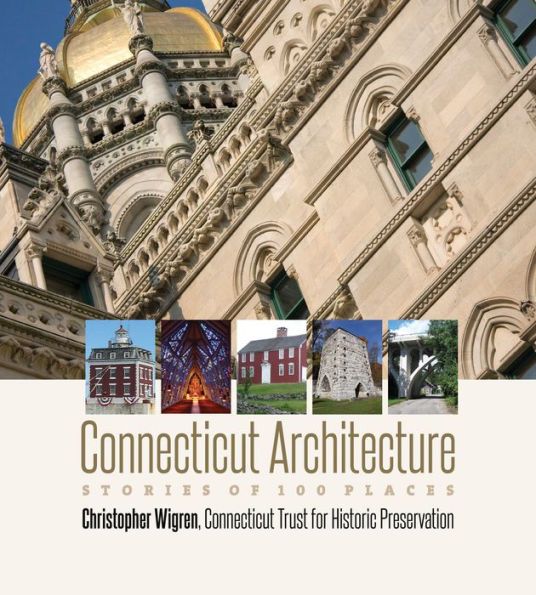Connecticut Architecture: Stories of 100 Places
The first comprehensive illustrated history of Connecticut architectureConnecticut boasts some of the oldest and most distinctive architecture in New England, from Colonial churches and Modernist houses to refurbished nineteenth-century factories. The state's history includes landscapes of small farmsteads, country churches, urban streets, tobacco sheds, quiet maritime villages, and town greens, as well as more recent suburbs and corporate headquarters. In his guide to this rich and diverse architectural heritage, Christopher Wigren introduces readers to 100 places across the state. Written for travelers and residents alike, the book features buildings visible from the road. Featuring more than 200 illustrations, the book is organized thematically. Sections include concise entries that treat notable buildings, neighborhoods, and communities, emphasizing the importance of the built environment and its impact on our sense of place. The text highlights key architectural features and trends and relates buildings to the local and regional histories they represent. There are suggestions for further reading and a helpful glossary of architectural termsA project of the Connecticut Trust for Historic Preservation, the book reflects more than 30 years of fieldwork and research in statewide architectural survey and National Register of Historic Places programs.
1128272784
Connecticut Architecture: Stories of 100 Places
The first comprehensive illustrated history of Connecticut architectureConnecticut boasts some of the oldest and most distinctive architecture in New England, from Colonial churches and Modernist houses to refurbished nineteenth-century factories. The state's history includes landscapes of small farmsteads, country churches, urban streets, tobacco sheds, quiet maritime villages, and town greens, as well as more recent suburbs and corporate headquarters. In his guide to this rich and diverse architectural heritage, Christopher Wigren introduces readers to 100 places across the state. Written for travelers and residents alike, the book features buildings visible from the road. Featuring more than 200 illustrations, the book is organized thematically. Sections include concise entries that treat notable buildings, neighborhoods, and communities, emphasizing the importance of the built environment and its impact on our sense of place. The text highlights key architectural features and trends and relates buildings to the local and regional histories they represent. There are suggestions for further reading and a helpful glossary of architectural termsA project of the Connecticut Trust for Historic Preservation, the book reflects more than 30 years of fieldwork and research in statewide architectural survey and National Register of Historic Places programs.
40.0
In Stock
5
1

Connecticut Architecture: Stories of 100 Places
296
Connecticut Architecture: Stories of 100 Places
296
40.0
In Stock

Product Details
| ISBN-13: | 9780819578136 |
|---|---|
| Publisher: | Wesleyan University Press |
| Publication date: | 11/06/2018 |
| Pages: | 296 |
| Sales rank: | 1,034,882 |
| Product dimensions: | 9.10(w) x 10.20(h) x 1.10(d) |
About the Author
What People are Saying About This
From the B&N Reads Blog
